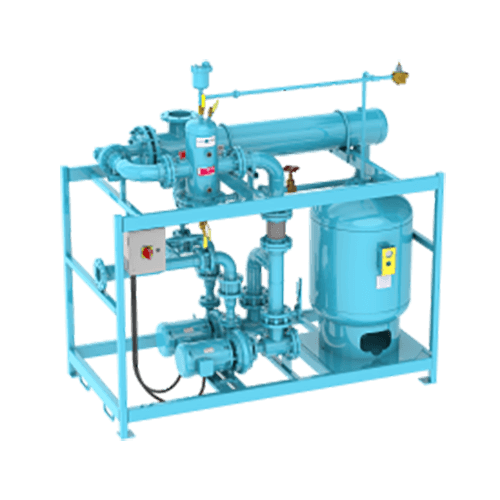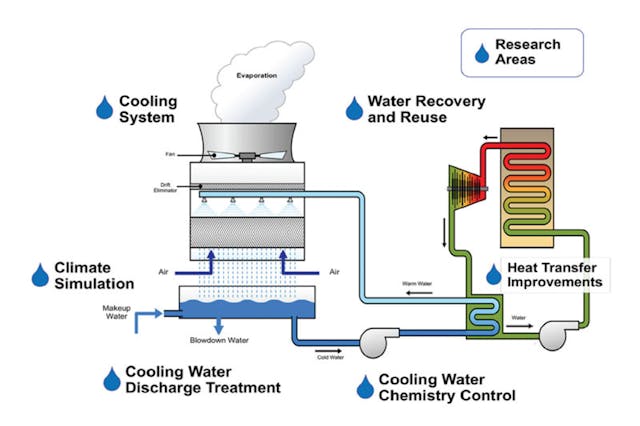Exploring the Conveniences and Applications of Heat Transfer Systems in Modern Market
Heat transfer systems play an important function in modern sector. They incorporate numerous systems such as conduction, convection, and radiation, each adding to reliable thermal administration. Industries like production and aerospace benefit significantly from these systems. As developments proceed, the integration of cutting-edge materials and modern technologies guarantees to enhance power performance. This evolution increases essential questions concerning the future ramifications for sustainability and functional expenses throughout multiple fields. What lies in advance in this ongoing makeover?
Understanding Heat Transfer Principles
Heat transfer principles are essential to the operation of numerous industrial systems. These concepts include the devices of conduction, convection, and radiation, each playing an important duty in managing thermal power. Understanding transmission involves examining how Heat relocates with solid products, while convection pertains to Heat transfer in fluids, driven by liquid motion. Radiation, distinct from the various other two, entails energy transfer via electromagnetic waves. The efficiency of Heat transfer effects system efficiency, energy usage, and general productivity. Reliable thermal administration is vital in procedures such as heating, Heat, and cooling recuperation. By understanding these concepts, industries can enhance their procedures, lower energy expenses, and boost equipment longevity, thus adding to an extra efficient and sustainable commercial landscape.
Secret Sorts Of Heat Transfer Solutions
While different industries utilize Heat transfer systems for diverse applications, several vital kinds attract attention because of their certain features and performances. One of the most common types consist of transmission, radiation, and convection systems. Conduction systems transfer Heat through direct contact in between materials, making them efficient in solid-state applications. Convection systems, on the other hand, make use of fluid movement to move Heat, appropriate for heating or cooling fluids and gases. Radiation systems run without a medium, depending on electromagnetic waves to move Heat, ideal for high-temperature settings. Each kind serves distinctive objectives, allowing industries to customize their Heat transfer services based on operational requirements, power effectiveness, and cost-effectiveness. Recognizing these systems is necessary for enhancing performance in numerous industrial settings.
Industrial Applications of Heat Transfer Technologies
The application of Heat transfer modern technologies in market plays an essential function in boosting power effectiveness and enhancing processes. DVS Heat Transfer Systems. By executing advanced Heat exchange systems, business can substantially minimize their ecological impact while enhancing total productivity. This assimilation not only fosters sustainability but likewise straightens with modern regulative and consumer needs for greener techniques
Power Performance Improvements
As markets significantly focus on sustainability, energy performance enhancements in Heat transfer innovations have actually ended up being vital for minimizing functional expenses and environmental effect. Boosted Heat exchangers, for example, make use of advanced products and designs to make best use of thermal performance while minimizing power usage. Moreover, integrating variable rate drives in pumping systems permits far better control of liquid flow, causing substantial power financial savings. The execution of clever sensing units and automation supplies real-time tracking, allowing modifications that maximize power use. Furthermore, waste Heat recovery systems record excess thermal energy, transforming it right into functional power. These improvements not just boost energy efficiency but likewise add to a more sustainable industrial landscape by decreasing greenhouse gas emissions and sustaining compliance with environmental regulations.
Process Optimization Techniques
Process optimization strategies are vital in improving the effectiveness and effectiveness of Heat transfer technologies in commercial applications. These techniques include refining procedures to make the most of Heat transfer performance while reducing energy consumption and operational costs. Methods such as computational fluid dynamics (CFD) modeling allow designers to evaluate and simulate Heat transfer scenarios, identifying areas for renovation. Additionally, real-time monitoring systems can supply useful information on temperature level gradients and circulation prices, making it possible for modifications that enhance efficiency. In addition, executing advanced control strategies, such as anticipating analytics, can boost system responsiveness to varying operational needs. By applying these optimization strategies, industries can accomplish greater thermal performance, lowered downtime, and enhanced product top quality, eventually causing increased competitiveness in the marketplace.

Environmental Impact Reduction
While commercial Heat transfer modern technologies are essential for functional effectiveness, their application likewise offers possibilities for significant ecological influence decrease. By enhancing power efficiency, these systems lessen gas consumption, bring about lower greenhouse gas discharges. Advanced Heat exchangers can recover waste Heat, rerouting it to preheat incoming liquids, thus reducing power demands. In enhancement, the integration of Heat transfer technologies in renewable energy systems, such as solar thermal and geothermal applications, supports the change to lasting methods. Industries that use these modern technologies additionally take advantage of reduced operational expenses and enhanced regulatory conformity. On the whole, the critical application of Heat transfer go now systems not just bolsters productivity however additionally promotes an extra sustainable commercial landscape, adding to global environmental objectives.
Benefits of Reliable Heat Transfer Solutions
Effective Heat transfer systems offer substantial benefits in modern industry, largely with enhanced power performance and price reduction. By maximizing thermal management, these systems minimize power waste, leading to lower functional prices (DVS Heat Transfer Systems). Companies can accomplish greater sustainability and improved productivity.

Power Performance Improvements
As sectors progressively focus on sustainability and cost-effectiveness, power performance renovations in Heat transfer systems have become a vital emphasis. Improved performance in these systems brings about reduced energy consumption, enabling facilities to operate more sustainably. By optimizing Heat transfer methods, industries can reduce waste Heat and accomplish much better thermal administration, considerably reducing their ecological impact. Advances in technologies such as Heat exchangers and insulation products add to improved performance and reliability. Implementing energy-efficient Heat transfer options not only sustains conformity with regulative standards yet likewise promotes a society of technology within organizations. Ultimately, these improvements are necessary in lining up industrial procedures with worldwide energy preservation goals, leading the way for a much more sustainable future in production and processing fields.
Price Reduction Opportunities
By optimizing Heat transfer systems, industries can disclose considerable cost decrease opportunities that boost their bottom line. Effective Heat transfer minimizes energy intake, causing reduced utility bills and minimizing functional expenses. In addition, enhanced system efficiency decreases the requirement for upkeep and repair work, in addition saving expenses over time. Boosted Heat transfer can also prolong tools life expectancy, permitting companies to delay resources expenditures on replacements. Additionally, waste Heat recovery systems can transform excess Heat right into functional power, further driving down expenses. These systems not only enhance procedures but likewise add to sustainability efforts, placing firms positively in a progressively eco-conscious market. Generally, the economic advantages of reliable Heat transfer systems are essential and considerable for competitive advantage.
Advancements in Heat Transfer Solutions
Just how can modern-day sector boost its procedures through innovative Heat transfer solutions? By adopting advanced materials and innovations, markets can substantially resource improve thermal efficiency and performance. Developments such as nanofluids, which enhance Heat transfer capabilities past standard liquids, and stage adjustment materials that save and release thermal power, are obtaining grip. In addition, the integration of wise sensing units and IoT devices enables real-time tracking and optimization of Heat transfer processes, reducing waste and boosting system responsiveness. Additive production methods allow the creation of even more intricate Heat exchangers that make best use of surface area while reducing product use. Collectively, these innovations drive functional effectiveness and develop affordable advantages in various fields, including aerospace, manufacturing, and energy.
The Duty of Heat Transfer in Sustainability Initiatives
While the push for sustainability remains to reshape sectors, the role of Heat transfer innovations ends up being significantly necessary in achieving ecological goals. Reliable Heat transfer systems facilitate power performance by optimizing thermal monitoring in different procedures, considerably lowering energy usage and greenhouse gas exhausts. Advanced Heat exchangers are made use of in industrial applications to redeem waste Heat, thus lessening power waste. Additionally, advancements such as stage adjustment materials improve thermal storage space, adding to renewable resource assimilation. Moreover, the adoption of sustainable liquids in Heat transfer systems can reduce environmental effect. By prioritizing efficient Heat transfer, markets not only enhance functional efficiency yet additionally align with global sustainability initiatives, fostering a cleaner, much more lasting future.
Regularly Asked Concerns
Exactly How Do Heat Transfer Systems Impact Energy Costs in Manufacturing?
Heat transfer systems significantly affect power costs in manufacturing by boosting efficiency, decreasing waste, and optimizing thermal monitoring. These renovations bring about decrease functional expenses, eventually benefiting overall performance and productivity in commercial procedures.
What Maintenance Is Required for Heat Transfer Equipments?
Upkeep for Heat transfer systems includes regular assessments, cleansing of elements, inspecting fluid levels and conditions, changing used parts, and ensuring proper insulation. These activities improve efficiency, expand life expectancy, and avoid costly malfunctions in procedure.
Are There Safety And Security Problems With Heat Transfer Solutions?
Safety and security interest in Heat transfer systems include possible leakages, pressure accumulation, and thermal threats. Correct style, regular upkeep, and adherence to safety procedures are necessary to mitigate these threats and ensure safe operation in commercial environments.
How Can I Pick the Right Heat Transfer System for My Company?
Selecting the right Heat transfer system entails assessing aspects such as performance, application requirements, budget plan restraints, and safety and security standards. A complete evaluation of these elements will assist ensure excellent performance and reliability in company procedures.
What Prevail Failings in Heat Transfer Solutions and Their Reasons?

Recognizing conduction includes analyzing exactly how Heat relocates via solid products, while convection pertains to Heat transfer in fluids, driven by liquid motion. By optimizing Heat transfer methods, sectors can reduce waste Heat and attain far better thermal management, considerably reducing their ecological influence. Waste Heat healing systems can transform excess Heat right into useful energy, better driving down costs. Advanced Heat exchangers are used in commercial applications to recover waste Heat, therefore reducing power waste. Usual failures in Heat transfer systems include leaks, rust, and ineffective Heat exchange.